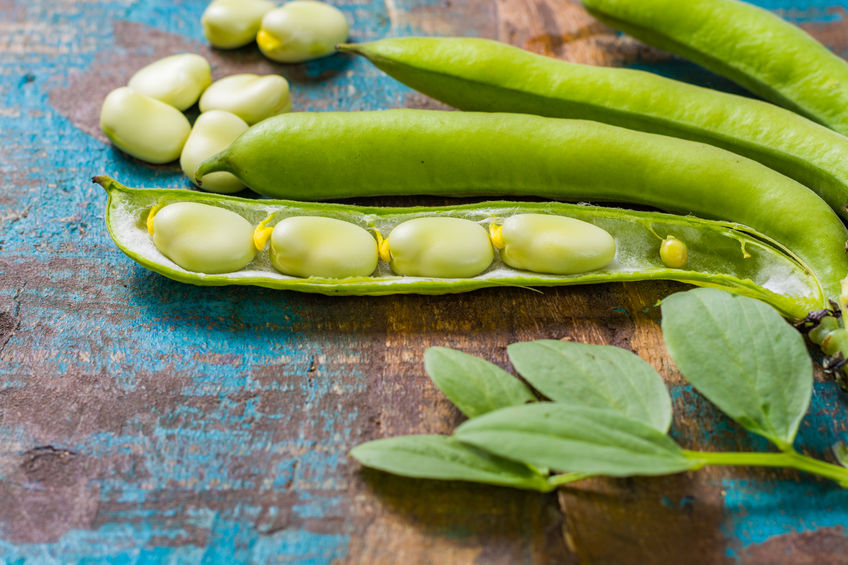What is the nutrition in lima beans?
Even if lima beans aren’t on your favorite foods list right now, you’ll want to make some room on your plate for these super nutritious legumes after reading this.
Nutrition in Lima Beans
Lima beans (aka butter beans, chad beans, wax beans, sieva beans, or Madagascar beans) have a lot to offer when it comes to nutrition, versatility, and taste.
What is the nutrition in lima beans? Here is the breakdown for 100 grams of lima beans:
• Calories: 164
• Fat: 6.8 grams (g)
• Protein: 7.5 g
• Fiber: 6.5 g
• Thiamin (B1): 0.142 milligrams (mg)
• Folate: 73 micrograms (mcg)
• Iron: 2.23 mg
• Magnesium: 40 mg
• Potassium: 472 mg
• Selenium: 4.2 mcg
• Zinc: 0.88 mg
Because they’re packed with protein, fiber, vitamins, minerals, and protective plant compounds, munching on lima beans may benefit your health in a bunch of ways.
Health Benefits of Lima Beans
• Rich in plant-based protein
Legumes (like lima beans) are a great source of protein for peeps following a plant-based diet.
Ideally, you should consume a mix of both plant- and animal-based protein on the reg. But if you’re strictly plant-based, lima beans are a great choice to help you meet your protein needs.
Your body needs protein for normal cellular function and maintaining the health of your organs, muscles, bones, and more. Plus, since it’s the most filling macronutrient, adding protein-rich foods (like lima beans) to meals and snacks can keep you feeling satisfied.
• Great for your gut
Eating a high fiber diet can help keep your gut in tip-top shape.
Eating beans (like lima beans) can help support your healthy gut bacteria. That may reduce your risk of health conditions like colon cancer and type 2 diabetes.
Bacteria in your gut ferment the fiber found in beans. This increases the production of compounds called short-chain fatty acids (SCFAs). SCFAs serve as important fuel for your gut bacteria, so they benefit your gut and intestinal lining health.
The bad news? Most peeps don’t consume nearly enough fiber. The good news? You can. Eating a balanced diet that includes fiber-rich lima beans will help you reach the daily recommended value of 28 grams of dietary fiber.
• Supports heart health
The high concentration of fiber and other nutrients like potassium and magnesium in lima beans can benefit your ticker.
Fiber helps reduce cholesterol and may help promote a moderate body weight. Magnesium and potassium are essential for blood pressure regulation. Beans may also help reduce inflammation and keep your blood vessels healthy.
Noshing on plant-based food sources (like lima beans) may help reduce heart disease risk factors. These risk factors include things like high levels of LDL cholesterol, high blood sugar, and high blood pressure.
In fact, regularly consuming legumes may significantly reduce your risk of developing heart disease. A 2017 review found that participants who ate the most beans had a 10 percent lower risk of developing heart disease.
In a 2019 review, bean-rich diets were also associated with a lower risk of coronary heart disease, high blood pressure, and obesity.
• Good choice for blood sugar control
Maintaining healthy blood sugar levels is important for your overall health. Lima beans pack a ton of protein and fiber. That’s the perfect combo for controlling your blood sugar.
Studies suggest that beans can benefit folks with diabetes by helping to lower post meal and long-term blood sugar levels.
Lima beans are loaded with other nutrients that the bod needs to maintain blood sugar levels. Magnesium, for example, is a mineral that’s important for how your body uses carbs. Your body needs magnesium to move blood sugar into your cells where it can be used for energy. Low magnesium intake is considered a risk factor for developing type 2 diabetes.
Tips to eat more lima beans
Lima beans have a smooth and creamy texture, and a mild taste. This means they play nice with lots of ingredients and make a smart pantry staple. They work well in many recipes, including salads, soups, dips, and pastas.
You can buy fresh lima beans in some areas, but canned or dried lima beans are the easiest to find in grocery stores.
Lima beans need to be cooked. You should never eat raw lima beans. Raw lima beans contain toxic compounds that can harm your health. The best way to remove these compounds is to soak, rinse, then boil or steam lima beans for at least 5 minutes.
Soaking, rinsing, and properly cooking lima beans also helps reduce compounds called lectins that interfere with the absorption of nutrients like iron.
Click here to read more about nutrition in lima beans.






